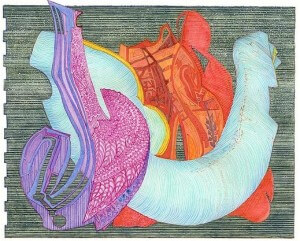As a committed draughtsman, I’m interested in technical improvisation. The experiments from my ORGANIC GRID Series” are intended to expand the vocabulary for my entire body of work. Most GRID drawings begin as chess-like progressions, allegories for what Samuel Beckett called “a form to accommodate the mess- the pain and disorder- of life inside and outside the mind”. Each composition is new-born and blind, with its own internal structure, disclosing itself gradually. Since Work-On-Paper is an unforgiving medium, sometimes the very quality of risk that keeps a drawing fresh- whether technical or aesthetic- can also lead to its failure. This has become a quietly passionate journey that proceeds slowly over an unpredictable, unpaved road, and often comes with detours.
The GRID drawings began more than 40 years ago as a way to re-examine the basic vocabulary of drawing, particularly lines and patterns, and the rhythms that grow from them. (this is currently referred to as “deconstructing”) An ongoing preoccupations of mine is recognizing the difference “between what we see and what we think we see”. If the Grids seem repetitive, know that with closer examination, the repercussions and interactions of increasingly refined edges, the weight of overlapping surfaces, texture and surfaces, etc. are all there.


